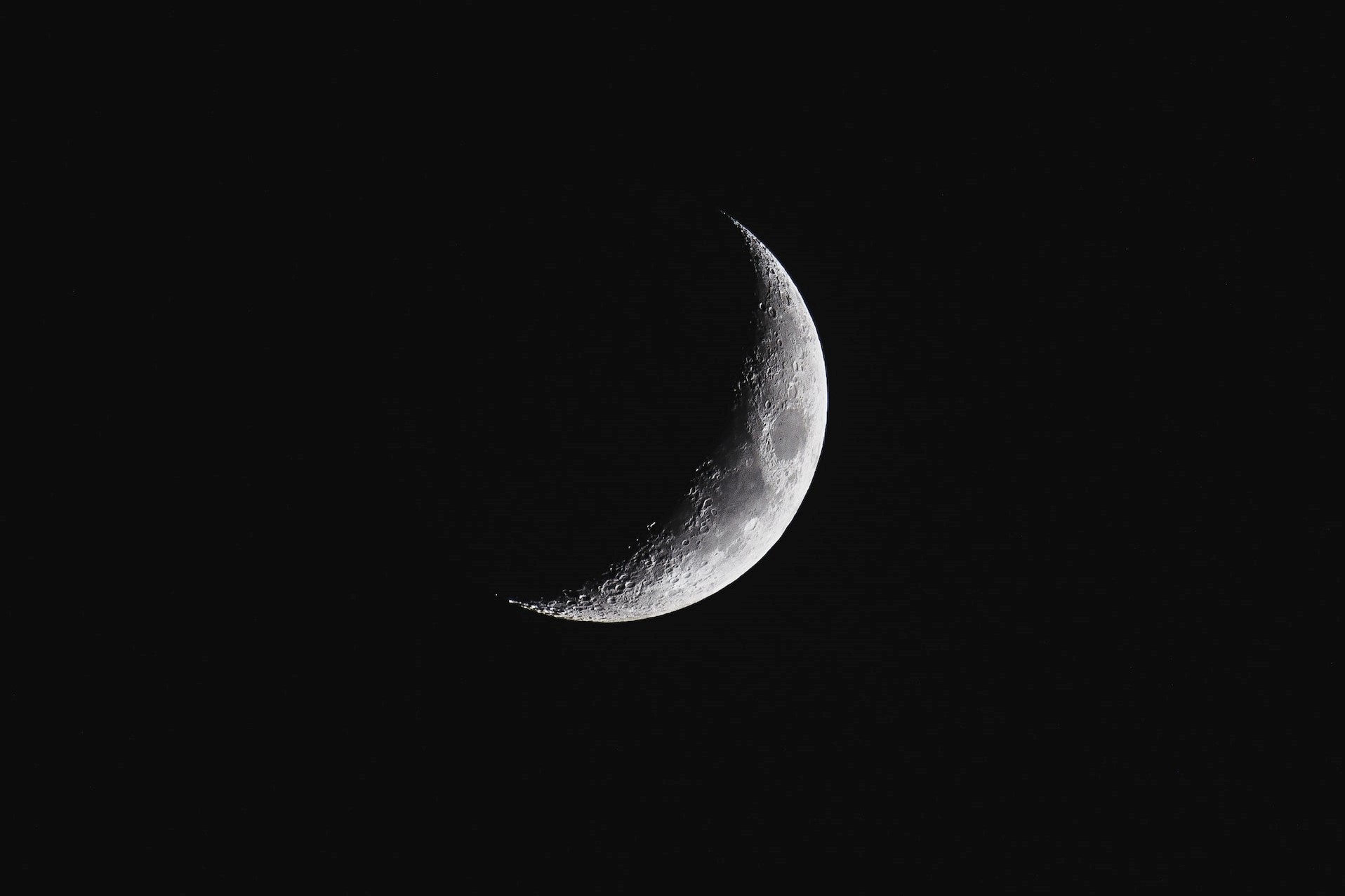Moon telescope could light up the cosmic dark ages

This proposed telescope is a full kilometre across, sitting in one of the thousands of massive craters on the far side of the moon. Image: Unsplash.
In summary
- Swinburne students are working with experts at technology giant Leidos to design a telescope that could be built on the dark side of the moon
- Six final-year students developed the telescope design, including building a prototype lunar rover that could help with construction
- The proposed design could be the next big thing in deep space observation, helping reveal the secrets of the so-called cosmic dark age
Pink Floyd eat your heart out. Swinburne students are working with experts at technology giant Leidos to design a telescope that could be built on the dark side of the moon, helping reveal the secrets of the so-called cosmic dark ages.
With the James Webb Space Telescope (JWST) currently beaming extraordinary images back to Earth, final-year Swinburne students are working on a design that could be the next big thing in deep space observation.
Emphasis on big
While the JWST is about the size of a tennis court, this telescope is a full kilometre across, sitting in one of the thousands of massive craters on the far side of the moon.
Dr Michelle Dunn, one of the Swinburne academics involved with the industry-linked project, says the telescope could help us understand how we got from the Big Bang to the formation of stars and galaxies.
“The far side of the moon has no atmosphere and is completely shielded from all the radio frequencies being emitted from Earth. This would give us an unobstructed view back in time to the earliest moments of our universe,” Dr Dunn says.
“This telescope could give us insight into the fog of the cosmic dark ages, where a soup of particles turned into the galaxies, stars and celestial bodies we can observe today.”
Working with an industry leader
Six Swinburne students worked with engineers at global science and technology leader Leidos to develop the telescope design, including building a prototype lunar rover that could help with construction. Students came from a diverse range of disciplines, including astrophysics, robotics, mechanical and civil engineering.
The telescope design would require stations to be built around a specially-selected moon crater, with wires weaved between them to hold the dish in place.
Final year robotics student Jadon Dutra designed a prototype of a robot that could take on this challenging task.
“The robot would take the wires from the lunar lander one kilometre across the crater, climb the other side of the crater wall and secure the wire on the other side, before repeating the task to weave a net for the telescope,” he says.
Jadon’s robot design can also drive upside down in case it gets flipped, and packs up into a small space so it can be more easily stored on the long journey to the moon’s far side.
He says working with industry experts to design a solution in an extremely challenging natural environment was an “out-of-this-world” experience.
“Getting to work on a real project like this with engineers who work in the field was a fantastic experience,” he says.
“It’s given me a great insight into the challenges of designing for space that will be valuable in any industry.”
Glenn Frankish, Director of Research and Emerging Technologies at Leidos, says, “working with Swinburne engineering and physics students is so professionally rewarding, and as a technologist it is immensely encouraging to watch the development of some very impressive engineering solutions.”
“The students applied considerable skill and engineering knowledge for this mission-oriented problem, and Leidos was very fortunate to lend a helping hand which I believe will add to their future career prospects in this exciting industry.”
Leidos Australia is a wholly owned subsidiary of Leidos, a Fortune 500® information technology, engineering, and science solutions and services leader working to solve the world’s toughest challenges in the defence, intelligence, civil and health markets. Headquartered in Reston, Virginia, Leidos reported annual revenues of approximately $13.7 billion for the fiscal year ended December 31, 2021.
Leidos Australia’s 1,500 employees work with some of Australia’s largest government agencies including Defence, the Australian Taxation Office and the Bureau of Meteorology to design, deliver and manage science, engineering and technology solutions that help to keep Australia safer, healthier and more efficient.
-
Media Enquiries
Related articles
-

- Astronomy
High school students work with Swinburne astronomers on the future of space
Swinburne’s Youth Space Innovation Challenge has inspired over 330 Australian teenagers to pursue a career in STEM.
Friday 26 July 2024 -

- Astronomy
- Science
Swinburne appoints new Director of Innovative Planet Research Institute
Leading geodesy expert, Professor Allison Kealy, has been appointed as the inaugural Director of Swinburne University's Innovative Planet Research Institute.
Monday 22 April 2024 -

- Astronomy
- University
OzGrav 2.0: A ‘new era of astrophysics’ launched at Swinburne
The next phase in the world-leading ARC Centre of Excellence for Gravitational Wave Discovery, dubbed 'OzGrav 2.0', launched this week at Swinburne University of Technology.
Wednesday 17 April 2024 -

- Design
- Astronomy
- Technology
- University
Swinburne ‘Rock Muncher’ takes part in Australian Rover Challenge
A multidisciplinary student team from Swinburne University of Technology competed in the 2024 Australian Rover Challenge held in Adelaide, South Australia.
Thursday 11 April 2024 -
.jpeg/_jcr_content/renditions/cq5dam.web.256.144.jpeg)
- Astronomy
New JWST observations reveal black holes rapidly shut off star formation in massive galaxies
New research showcases new observations from the James Webb Space Telescope that suggest black holes rapidly shut off star-formation in massive galaxies by explosively removing large amounts of gas...
Tuesday 23 April 2024

